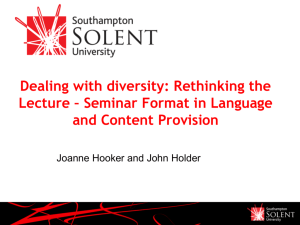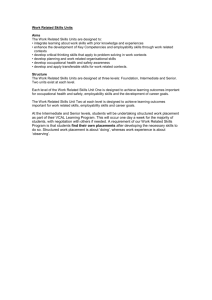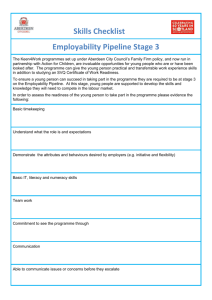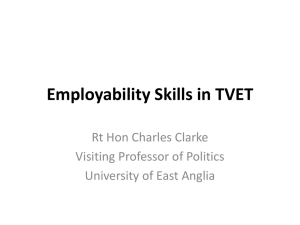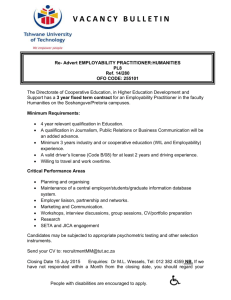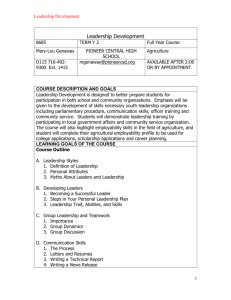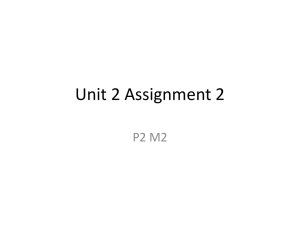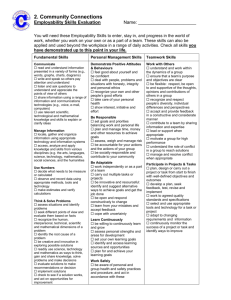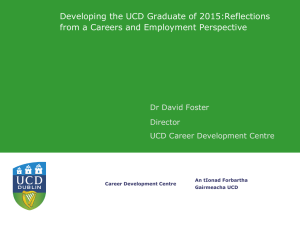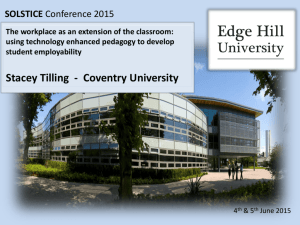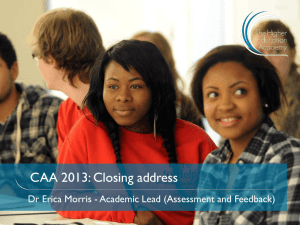Evaluating My Practice of Engaging Students Learning
advertisement
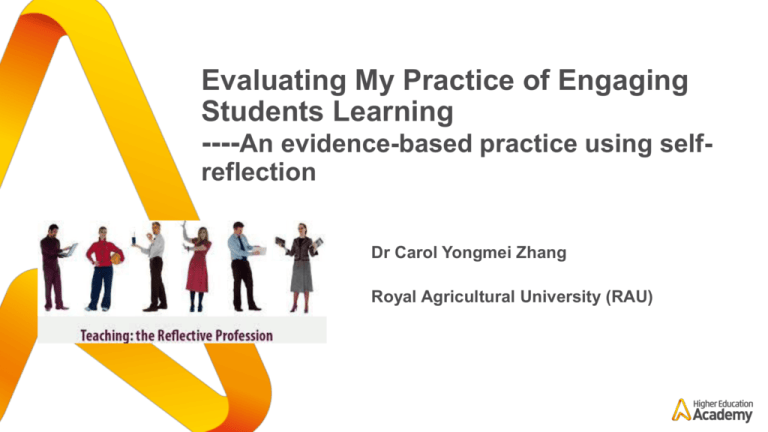
Evaluating My Practice of Engaging Students Learning ----An evidence-based practice using selfreflection Dr Carol Yongmei Zhang Royal Agricultural University (RAU) Active learning (Organisational Behaviour) Employability embedded assessment (HR in Context) Use of digital tools PRS system Flipped classroom Feedback Kelly (2009) ‘enthusiastic, stimulating delivery, with a demonstrable passion for the subject matter, is key to motivating and inspiring students'. The best lecture engage, inspire and challenge students, promoting active learning to ensure a deep understanding of the topics covered (Fry et al., 2015). 4 My Practice… 5 Active Learning The best lecture engage, inspire and challenge students, promoting active learning to ensure a deep understanding of the topics covered (Fry et al., 2015). 6 My Practice… Offer students opportunity to reflect on learning Think-pair-share activity (in-class mini case study) Self-summary activity ‘what you have learnt from this session?’ Formative writing exercise 7 不闻不若闻之,闻之不若见之, 见之不若知之,知之不若行之, 学至于行之而止矣。(《荀子·儒 效》) Xunzi (Hsün Tzu, c. 310—c. 220 B.C.E.) 8 Embedding employability into the core of higher education will continue to be a key priority of Government, universities and colleges, and employers (HEFCE 2011) Employability Embedded Assessment Sambell et al (2012) propose that the characteristics that promote learning orientated assessment and employability should develop students’ abilities to evaluate their own progress and direct their own learning. 10 My Practice… HR in Context Assessment 1: Team-based role play by incorporating theories covered such as workforce planning, recruitment and selection 11 Kolb (1984) viewed the group project as an experiential learning process where students bring their own knowledge and previous experience to learning. Students say: ‘The HR in Context assessments in year 1 have been valuable in preparing me for my placement in year 2’. ‘I feel confident and fully prepared for my future employment’. 12 13 PRS System Barrett et al (2005) suggest that the PRS can be used to poll students instantly about their attitudes, conceptions, beliefs and knowledge about a specific topic, providing intellectual support and encouraging independence. 14 In-Class Quizzes (OB module) Large group (210 students) OB Assessment: MCQs Exam in May Select 3-5 questions that students frequently get wrong on assessment and inform student why these questions were chosen. They can make the mistakes now and correct them. Flipped Learning Flexible environment Learning culture Intentional content Professional educator 16 Gibbs and Simpson (2005) stressed that feedback is the most important aspect of the assessment process in raising achievement. Email feedback Moodle feedback Audio feedback Questi ons Your comments Your tutor’s comments Your Action points next 1 2 3 Exploring innovative way of providing feedback to students on essays and reports, for example, screen capture software Involving students as assessors to engage their learning and self-reflection, for example, using self-assessment template above. 19 12/8/2015 Barrett, M., Bornsen, S.E., Erickson, S.L., Markey, V. And Spiering, K. (2005) The personal response system as a teaching aid. Communication Teacher 19: 89-92 Carless, D., Joughin, G and Mok, M. (2006) Learning-oriented assessment: principles and practice. Assessment and Evaluation in Higher Education 31 (4): 395-398 Fry, H., Ketteridge, S. And Marshall, S. (2015) A Handbook for Teaching and Learning in Higher Education. 4th Ed. Routledge Gibbs, G. and Simpson, C. (2005) Conditions under which assessment supports student learning. Learning and Teaching in Higher Education 1 (1): 3-31 Kelly, A.V. (2009) The Curriculum: theory and practice. 6th Ed. Sage Kolb, D. (1984) Experiential Learning. Prentice Hall Lunt, T. and Curran, J. (2009) Are you listening please? The advantages of electronic audio feedback compared to written feedback. Assessment and Evaluation in Higher Education 35 (7), 759–769. Quality Assurance Agency (QAA) (2012) UK Quality Code for Higher Education-Chapter B5: student engagement. [Online] available from: http://www.qaa.ac.uk/en/Publications/Documents/quality-code-B5.pdf (Date accessed 29 Dec 2014) Race, P. (2014) Making Learning Happen: A guide for post-compulsory education. 4th Ed. Sage Sambell, K., McDowell, L. and Montgomery, C. (2012) Assessment for Learning in Higher Education. Routledge

